 Web Front-end
Web Front-end Vue.js
Vue.js VUE3 development basics: Use the Vue.js plug-in to encapsulate the calendar schedule component
VUE3 development basics: Use the Vue.js plug-in to encapsulate the calendar schedule componentVue.js作为目前最流行的前端框架之一,一直都备受开发者青睐。而VUE3也在近期正式发布,新增了很多特性和改进。在本文中,我们将使用Vue.js插件并结合VUE3的特性,封装一个具有基本功能的日历日程组件。
在开始之前,需要先说明一下为什么要使用Vue.js插件。Vue.js插件的优点在于可以将组件封装成一个单独的模块,提供给其他的Vue.js项目使用。当我们开发一个功能强大的组件时,可以将其封装成插件并让其他项目使用,从而提高开发效率和代码复用性。现在开始我们的插件开发之旅。
第一步:建立项目和插件
在开始开发任何组件之前,我们需要先建立一个Vue.js项目并利用其生成一个插件文件。在此处,我们使用Vue CLI 3来生成一个新的项目。使用以下命令创建一个新的项目:
vue create vue-calendar-scheduler-plugin
接下来,我们可以通过使用以下命令来初始化一个插件:
vue add plugin my-calendar-scheduler
这个命令会为我们创建一个src/plugins/my-calendar-scheduler.js文件。我们可以在这个文件中封装我们的日历日程组件。
第二步:使用VUE3 Composition API开发组件
在Vue.js 3中,Composition API是一种全新的API风格,它提供了一种新的方式来组织和编写Vue.js代码。与前面版本的API不同,Composition API提供了一个基于逻辑组织代码的方式。使用Composition API,可以将更多的复杂逻辑放到组件外部,这使得组件更加易于维护和测试。下面我们将使用Composition API来开发日历日程组件。
- 引入必要的依赖
首先,我们需要引入必要的依赖。因为我们的插件需要使用Day.js来处理时间,我们需要先安装Day.js:
npm install dayjs --save
接着,我们需要引入Vue.js 3以及使用Composition API所需的依赖:
import { createApp, provide, h, reactive, onMounted } from 'vue';
import dayjs from 'dayjs'其中,createApp是用来创建Vue.js应用程序实例的方法。h是创建虚拟节点的方法,provide和reactive是提供依赖注入功能的方法。onMounted则用于在组件挂载到DOM上后执行操作。
- 定义组件
下一步,我们需要定义我们的日历日程组件。这里我们使用了reactive()来创建响应式对象来管理组件状态。
const CalendarScheduler = {
name: 'Calendar',
setup() {
const schedule = reactive({
title: '',
startDate: '',
endDate: '',
startTime: '',
endTime: '',
description: ''
});
const handleAddSchedule = () => {
// 添加日程逻辑
}
const handleDeleteSchedule = () => {
// 删除日程逻辑
}
const handleUpdateSchedule = () => {
// 更新日程逻辑
}
return {
schedule,
handleAddSchedule,
handleDeleteSchedule,
handleUpdateSchedule
};
}
};在以上代码中,我们定义了三个方法以处理添加(add)、删除(delete)和更新(update)操作。接着我们需要对schedule对象进行基本的渲染和处理。
<template>
<div class="calendar-scheduler">
<div class="calendar-header">
<span class="calendar-prev-month" @click="changeMonth(-1)"> << </span>
<span class="calendar-cur-month-year">{{ month }} {{ year }}</span>
<span class="calendar-next-month" @click="changeMonth(1)"> >> </span>
</div>
<div class="calendar-body">
<table>
<thead>
<tr>
<th>日</th>
<th>一</th>
<th>二</th>
<th>三</th>
<th>四</th>
<th>五</th>
<th>六</th>
</tr>
</thead>
<tbody>
<tr v-for="week in data" :key="week">
<td v-for="day in week" :key="day" :class="dayClass(day)">
<span class="day-number" @click="handleDayClick(day)">{{ day }}</span>
<ul class="schedule-list">
<li v-for="(item, index) in scheduleList(day)" :key="item.title + index ">{{ item.title }}</li>
</ul>
<div class="add-schedule-button" @click="handleAddSchedule(day)">{{ addScheduleButtonLabel }}</div>
</td>
</tr>
</tbody>
</table>
</div>
</div>
</template>在上面的代码中,我们定义了一个基本的日历日程组件布局。我们使用了Vue.js 3提供的v-for指令来遍历日期和日程列表,同时使用dayClass函数来处理日期文本的样式。
- 添加Day.js逻辑
接下来,我们需要添加Day.js所需要的逻辑,这将使我们的代码更加灵活可用。我们可以通过定义一个data计算属性来处理每个月有多少天,以及计算第一天是星期几。
const dayjsMixin = {
computed: {
month() {
return dayjs(`${this.year}-${this.monthNumber}-01`).format('MMMM');
},
daysInMonth() {
return dayjs(`${this.year}-${this.monthNumber}-01`).daysInMonth();
},
monthNumber() {
return dayjs(`${this.year}-${this.monthNumber}-01`).month() + 1;
},
firstDayOfWeek() {
return dayjs(`${this.year}-${this.monthNumber}-01`).startOf('month').day();
},
}
};在上述代码中,我们在dayjsMixin中定义了四个计算属性来处理月份名称、月份天数、月份数字和第一天是星期几。
第四步:导出插件
在完成以上功能后,我们现在可以将其封装成一个插件并导出。我们可以使用Vue.js提供的provide/inject组件来实现任何Vue.js组件之间的通信。在具有加载事件的组件上,我们使用onMounted机制导出插件。最后,我们使用provide来创建插件并注册组件。
export default {
install: (app) => {
app.mixin(dayjsMixin);
app.component('CalendarScheduler', defineComponent(CalendarScheduler));
provide(CalendarScheduler.name, {
title: '',
startDate: '',
endDate: '',
startTime: '',
endTime: '',
description: ''
});
}
};通过以上步骤,我们就完成了我们的Vue.js插件——日历日程组件。这个组件是我们在Vue.js 3中使用Composition API的一个好例子。
结语
在本文中,我们使用Vue.js 3和Composition API来创建了一个日历日程组件并封装成了Vue.js插件,该组件能够方便地用于其他项目并实现了一些基本的日历日程功能。在VUE3中,Composition API是一个非常强大的工具,使我们的代码更加简洁和灵活。随着VUE3的普及,我们相信Composition API的使用将越来越广泛。
The above is the detailed content of VUE3 development basics: Use the Vue.js plug-in to encapsulate the calendar schedule component. For more information, please follow other related articles on the PHP Chinese website!
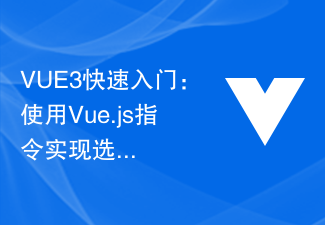 VUE3快速入门:使用Vue.js指令实现选项卡切换Jun 15, 2023 pm 11:45 PM
VUE3快速入门:使用Vue.js指令实现选项卡切换Jun 15, 2023 pm 11:45 PM本文旨在帮助初学者快速入手Vue.js3,实现简单的选项卡切换效果。Vue.js是一个流行的JavaScript框架,可用于构建可重用的组件、轻松管理应用程序的状态和处理用户界面的交互操作。Vue.js3是该框架的最新版本,相较于之前的版本变动较大,但基本原理并未改变。在本文中,我们将使用Vue.js指令实现选项卡切换效果,目的是让读者熟悉Vue.js的
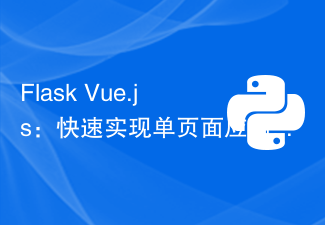 Flask + Vue.js:快速实现单页面应用Jun 17, 2023 am 09:06 AM
Flask + Vue.js:快速实现单页面应用Jun 17, 2023 am 09:06 AM随着移动互联网和Web技术的迅速发展,越来越多的应用需要提供流畅、快速的用户体验。传统的多页面应用已经无法满足这些需求,而单页面应用(SPA)则成为了解决方案之一。那么,如何快速实现单页面应用呢?本文将介绍如何利用Flask和Vue.js来构建SPA。Flask是一个使用Python语言编写的轻量级Web应用框架,它的优点是灵活、易扩
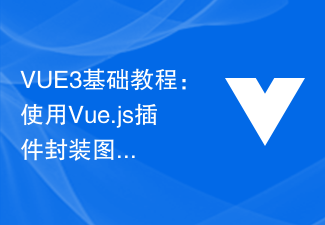 VUE3基础教程:使用Vue.js插件封装图片上传组件Jun 15, 2023 pm 11:07 PM
VUE3基础教程:使用Vue.js插件封装图片上传组件Jun 15, 2023 pm 11:07 PMVUE3基础教程:使用Vue.js插件封装图片上传组件Vue.js是一款流行的前端框架,它使开发者可以用更少的代码创建更高效、灵活的应用程序。尤其是在Vue.js3发布之后,它的优化和改进使得更多的开发者倾向于使用它。这篇文章将介绍如何使用Vue.js3来封装一个图片上传组件插件。在开始之前,需要先确保已经安装了Vue.js和VueCLI。如果尚未安装
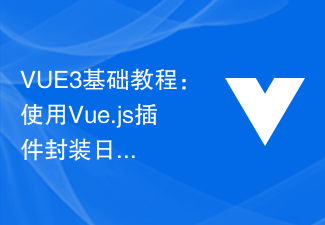 VUE3基础教程:使用Vue.js插件封装日历组件Jun 15, 2023 pm 09:09 PM
VUE3基础教程:使用Vue.js插件封装日历组件Jun 15, 2023 pm 09:09 PMVue.js是现代化的前端JavaScript框架之一,它提供了一套完整的工具来构建交互式用户界面。在Vue.js的生态系统中,有各种各样的插件和组件,可以大大简化我们的开发流程。在本篇文章中,我们将介绍如何使用Vue.js插件封装一个日历组件,以方便我们在Vue.js项目中快速使用。Vue.js插件Vue.js插件可以扩展Vue.js的功能。它们可以添加全
 Vue.js实现登录验证的完整指南(API、JWT、axios)Jun 09, 2023 pm 04:04 PM
Vue.js实现登录验证的完整指南(API、JWT、axios)Jun 09, 2023 pm 04:04 PMVue.js是一种流行的JavaScript框架,用于构建动态Web应用程序。实现用户登录验证是开发Web应用程序的必要部分之一。本文将介绍使用Vue.js、API、JWT和axios实现登录验证的完整指南。创建Vue.js应用程序首先,我们需要创建一个新的Vue.js应用程序。我们可以使用VueCLI或手动创建一个Vue.js应用程序。安装axiosax
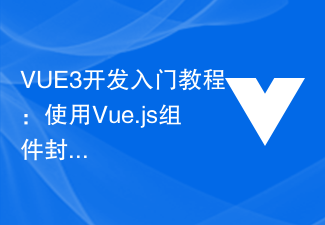 VUE3开发入门教程:使用Vue.js组件封装chart图表Jun 15, 2023 pm 10:29 PM
VUE3开发入门教程:使用Vue.js组件封装chart图表Jun 15, 2023 pm 10:29 PM随着大数据时代的到来,数据可视化已经成为了现如今的趋势之一。在Web前端开发的过程中,如何使用Vue.js进行数据可视化处理,成为了许多前端开发者所关注的问题。本文将会介绍如何使用Vue.js组件,封装基于chart.js库的图表。1.了解chart.jsChart.js是一款基于HTML5CanvasElement的简单易用、跨平台的开源图表库,我们可
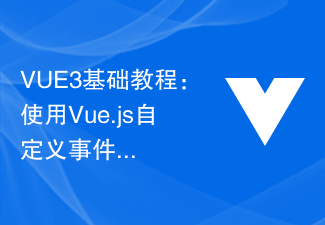 VUE3基础教程:使用Vue.js自定义事件Jun 15, 2023 pm 09:43 PM
VUE3基础教程:使用Vue.js自定义事件Jun 15, 2023 pm 09:43 PMVue.js是一款流行的JavaScript框架,它提供了很多方便的特性,所以它在开发Web应用程序时非常有用。Vue.js中的自定义事件系统使其更加灵活,并且可以通过组件事件触发和处理来实现更好的代码重用性。在本文中,我们将讨论如何使用Vue.js的自定义事件。Vue.js中自定义事件的基础在Vue.js中,我们可以通过v-on指令来监听DOM事件。例如,
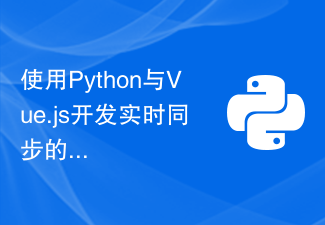 使用Python与Vue.js开发实时同步的Web应用程序Jun 17, 2023 am 08:28 AM
使用Python与Vue.js开发实时同步的Web应用程序Jun 17, 2023 am 08:28 AM随着Web应用程序的普及和用户体验的要求不断提高,实时同步已经成为了现代Web应用程序不可或缺的功能。在本文中,我们将介绍如何使用Python和Vue.js开发实时同步的Web应用程序。为了实现实时同步的功能,我们需要使用一些现代化的Web技术,其中包括WebSocket、异步编程和前端框架。以下是本文中将用到的技术栈:Python3.6+FlaskFla


Hot AI Tools

Undresser.AI Undress
AI-powered app for creating realistic nude photos

AI Clothes Remover
Online AI tool for removing clothes from photos.

Undress AI Tool
Undress images for free

Clothoff.io
AI clothes remover

AI Hentai Generator
Generate AI Hentai for free.

Hot Article

Hot Tools

ZendStudio 13.5.1 Mac
Powerful PHP integrated development environment

SAP NetWeaver Server Adapter for Eclipse
Integrate Eclipse with SAP NetWeaver application server.

EditPlus Chinese cracked version
Small size, syntax highlighting, does not support code prompt function

DVWA
Damn Vulnerable Web App (DVWA) is a PHP/MySQL web application that is very vulnerable. Its main goals are to be an aid for security professionals to test their skills and tools in a legal environment, to help web developers better understand the process of securing web applications, and to help teachers/students teach/learn in a classroom environment Web application security. The goal of DVWA is to practice some of the most common web vulnerabilities through a simple and straightforward interface, with varying degrees of difficulty. Please note that this software

Atom editor mac version download
The most popular open source editor





